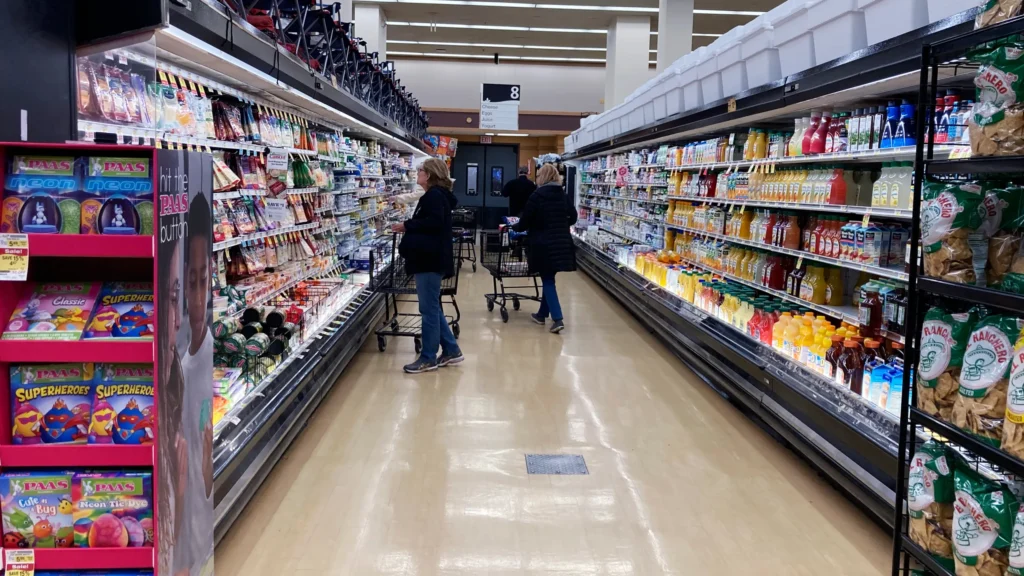The significant inflation surge that gripped the U.S. economy over the past three years appears to be waning, with American consumers playing a crucial role in mitigating the impact. Large corporations such as Amazon, Disney, and Yum Brands have reported a noticeable shift in consumer behavior. Shoppers are increasingly opting for more affordable alternatives, searching for bargains, and avoiding high-priced items. This trend is contributing to a moderation in inflation rates, signaling a return to pre-pandemic economic patterns.
Consumer Behavior and Inflation
The current economic landscape reflects a more price-sensitive consumer base. With inflation rates gradually decreasing toward the Federal Reserve’s target of 2%, this shift in consumer spending habits has been pivotal. The concept of “high prices begetting high prices” is at play, as persistent high prices have led consumers to demand lower costs, forcing companies to slow or reduce price hikes. Tom Barkin, President of the Federal Reserve Bank of Richmond, highlighted this phenomenon, noting that consumer resistance to high prices is instrumental in addressing inflation.
Impact of Consumer Spending
The reluctance to pay elevated prices is pushing companies to reassess their pricing strategies. This consumer pushback has resulted in a deceleration of inflation pressures. Although prices remain elevated, the moderating trend is a significant shift from the rampant inflation experienced over recent years. This change is easing financial strain on households and improving economic outlooks, which had been negatively impacted by inflation concerns.
Other Contributing Factors
In addition to shifting consumer preferences, other elements are contributing to the cooling of inflation. The recovery of supply chains has increased the availability of essential goods like vehicles, meats, and furniture. Furthermore, the Federal Reserve’s high interest rates have dampened sales in sectors sensitive to borrowing costs, such as real estate, automobiles, and home appliances. These factors combined are helping to stabilize prices and ease inflationary pressures.
Potential Risks to Economic Stability
Despite these positive developments, there are concerns about the potential risks of reduced consumer spending. Consumer expenditure accounts for more than two-thirds of U.S. economic activity. A substantial decrease in spending could pose a threat to economic stability. Recent evidence of a cooling job market adds to these concerns, suggesting that a drop in consumer spending could potentially derail economic recovery. This fear contributed to a sharp decline in stock prices last week, although markets have since shown signs of recovery.
Upcoming Economic Reports
This week will provide critical updates on inflation and consumer health. On Wednesday, the government is expected to release the consumer price index (CPI) for July. Analysts anticipate that the core CPI, which excludes volatile food and energy prices, will show a year-over-year increase of 3.2%. This would represent a slight decrease from June’s 3.3% and mark the lowest annual inflation rate since April 2021. The report will offer further insights into the current state of inflation and consumer behavior.
Economic Outlook and Future Prospects
As inflation continues to moderate, attention will turn to how sustained changes in consumer behavior will impact the broader economy. The balance between moderating inflation and maintaining robust consumer spending will be crucial for economic stability. Policymakers and businesses will need to navigate these dynamics carefully to ensure continued economic growth while managing inflationary pressures.
The shift in consumer behavior towards more cost-conscious spending has played a significant role in alleviating inflationary pressures. While the reduction in inflation rates is a positive development, ongoing monitoring of consumer spending and economic indicators will be essential to ensure long-term stability. As the U.S. economy adjusts to these new patterns, the interplay between inflation control and consumer confidence will remain a key focus for policymakers and market participants.
